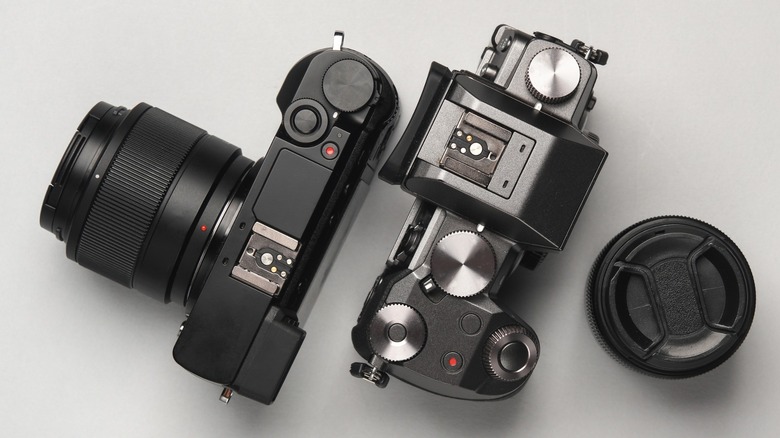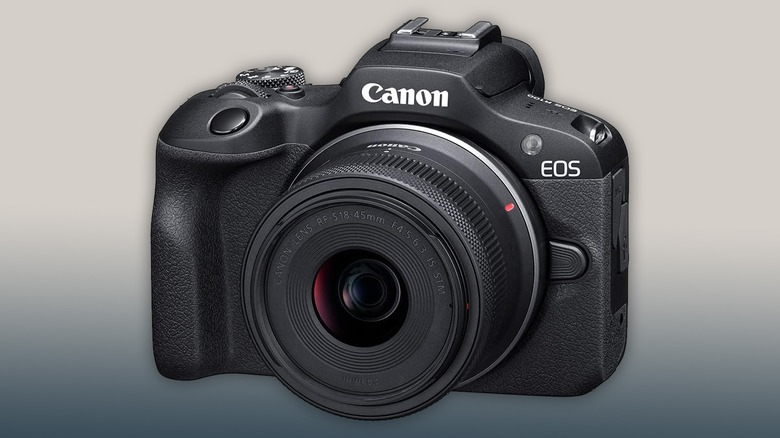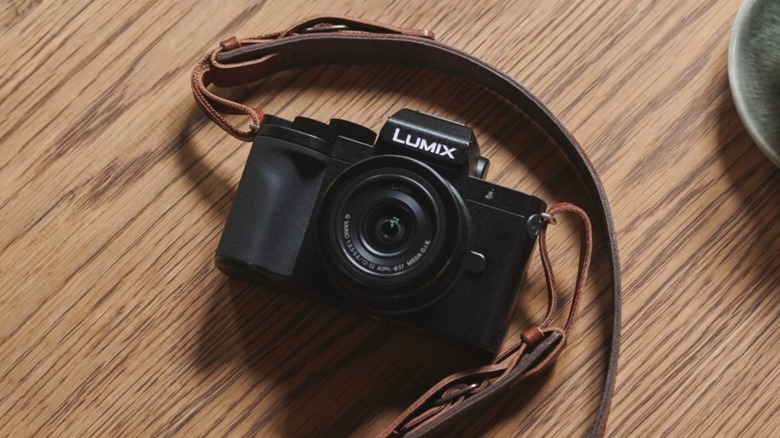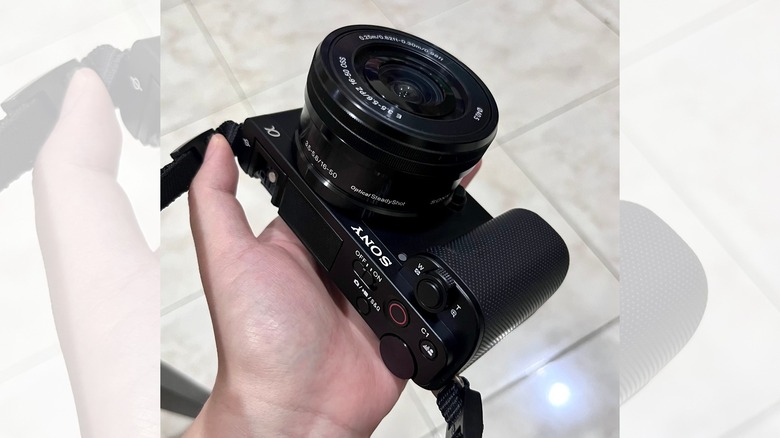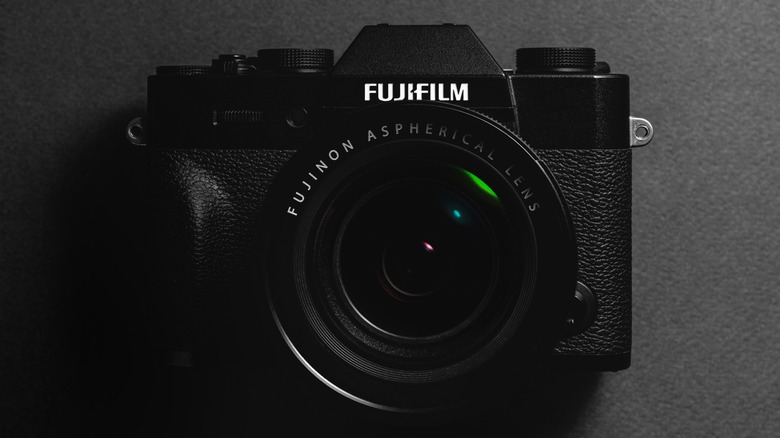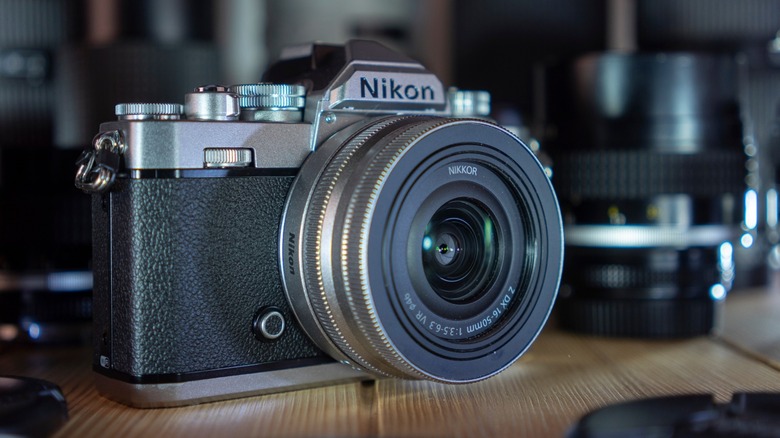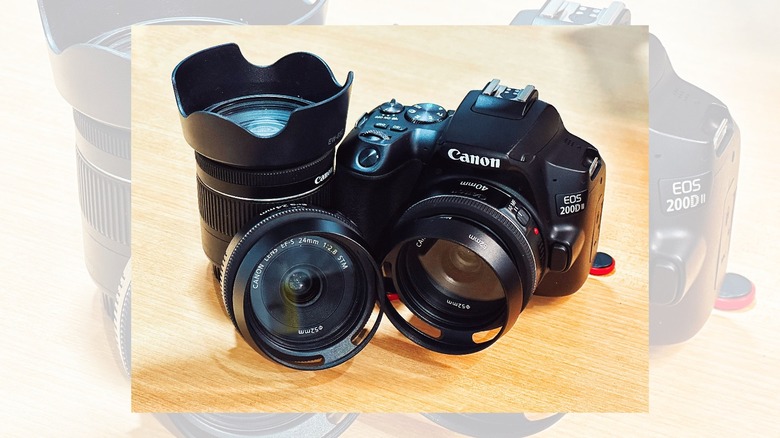5 Of The Best Mirrorless Cameras For Beginners
We may receive a commission on purchases made from links.
Smartphone cameras have become so good that the average person no longer needs a dedicated camera to capture memories. However, despite the power of computational photography, the thin profiles of smartphone cameras will always be limited compared to the massive lenses you can find on mirrorless cameras.
So, if you're serious about leveling up your photography skills and want to have more manual control over your camera settings, then maybe it's time to upgrade to a mirrorless camera. While DSLRs camera used to be a sign of serious photography, it's no longer the case anymore, as mirrorless cameras have now caught up with them in terms of image quality and performance.
But with the many different camera brands and models on the market, how do you know which one you should get? We'll look at five different mirrorless cameras that are best for beginners. Since you're probably just starting out with your photography equipment, we'll only look at camera kits that already include a basic zoom lens when you buy them.
Canon EOS R100
Canon is one of the global leaders in the camera space, and it absolutely dominated the DSLR market in the 2000s and 2010s. While it no longer has the popularity it had before mirrorless cameras became prevalent, Canon still makes excellent and affordable mirrorless cameras. This is also one of the reasons why I built my photography career around the Canon camera body — it was the cheapest camera available when my father bought my Canon EOS 350D in 2006. It was affordable but allowed me to produce excellent images. That's why I recommend the Canon EOS R100 with the 18-45mm kit.
This camera is just priced at $499 on Amazon, making it one of the most affordable cameras available on the market. If you're willing to invest $200 more, you could also go for the two-lens kit, which adds a 55-210mm kit lens, giving you more range. On the other hand, if you already have one or more EF lenses at home, you could just buy the body only option for $379.00 and just get the Canon Mount Adapter EF to EOS R to use your old lenses with the new camera.
More than that, Canon also has a well-built lens system, giving you more options if you want to upgrade later. After all, the first camera that you buy will likely be the system that you will use for the rest of your photography journey, as changing systems could be expensive, especially if you're just a hobbyist.
Lumix G100
This is the only camera in our list that uses the Four Thirds sensor, which is physically smaller than the APS-C sensor used in every other camera I'm recommending today. Even though the G100's sensor has a disadvantage in terms of size (meaning it can take in less light from the scene), you still cannot see the difference between the bigger sensors in the final output.
That's why I recommend the Lumix G100 camera if you prefer portability over everything else. This makes the G100 camera body smaller and lighter than the R100. But, more importantly, it also makes the camera lenses smaller and lighter. So, even if you upgrade to a super telephoto or fast Lumix lens in the future, you don't have to worry about lugging around heavy glass with your camera gear. I've previously used a Lumix camera from a friend with a professional lens attached, and I can absolutely say that it's the lightest camera system I've ever used. If it only didn't cost so much, I would've switched to Lumix cameras for my professional work.
The Lumix G100 with a 12-32mm kit lens has a regular price of $749.99. However, it's on sale at 20% off at the time of writing, bringing the price down to just $597.99. Even with the discount, the Canon R100 is still more affordable. However, you must pay a premium if you want the convenience of a lighter photography kit.
Sony Alpha ZV-E10
Sony just launched the Sony Alpha ZV-E10 II, which is its second-generation mirrorless camera designed for vlogging. However, I'm recommending the older generation as it's still a great camera and costs less.
The Sony Alpha ZV-E10 is even smaller than the Lumix G100 because it drops the viewfinder. Many photographers would consider this a mortal sin, but I found that camera display technology has got to the point that you can reliably use it for taking your images. In fact, I find myself using my camera's LCD screen over the viewfinder even when shooting events.
Aside from its compact form factor, the Sony Alpha line of cameras give you a ton of lens options for future upgrades. It also has a more robust third-party lens market, meaning you don't have to spend top dollar just to get great quality glass for your camera.
The Sonyl Alpha ZV-E10 costs $798.00 with the 16-50mm kit. You can also get it in either white or black, if you're a bit more particular. But if you're willing to spend more for the latest gear, you can get the Alpha ZV-E10 II with the same 16-50mm lens for $1,099.99
Fujifilm X-T30 II
If you're interested in the manual dials of classic film cameras but don't want to spend money on film and the hassle of developing it, then I recommend the Fujifilm X-T30 II. Fujifilm's X-series mirrorless cameras are some of the best you can get. It delivers excellent image quality, but also puts the art back into photography with its unique control scheme.
Unlike all the other cameras in this list, you have to physically move dials all over the camera to change the shutter speed and aperture if you're using manual mode — exactly like how you do with the film cameras from the 1970s. Its screen also flips up and down, making it more discrete to use and feels like the twin-lens reflex cameras from the 1960s if you prefer using it in that mode.
Aside from the shutter speed and aperture dials, the biggest thing that Fujifilm cameras bring is the built-in film simulation profiles that they have. Fujifilm film rolls have been known for the unique colors and feel they bring, much like the filters that Instagram and other photo-centric services use. But instead of doing it manually, you can set it in camera, allowing you to shoot as if you're using film.
The Fujifilm X-T30 II starts at $999.95 with the 15-45mm kit lens. It's also available with the faster 18-55mm kit lens, but you'll have to pay an extra $300 for the better glass. But if you want to look at your other Fujifilm options, you can check out our list of its complete line up.
Nikon Z fc
The Nikon Z fc is a direct competitor to the Fujifilm X-T30 II, especially as it has the same design theme — manual dials for setting shutter speed and several other camera functions. However, Nikon lenses do not have aperture dial. Instead, you'll set it on the camera directly via small window that shows you the current aperture setting, much like the old 'shots remaining' window on classic film cameras.
One advantage that the Nikon Z fc has over the Fujifilm X-T30 II, though, is that you can set the ISO directly on the top left dial of the camera. The latter requires you to do so on the menu, which somewhat reduces its analog feel. Another reason why I recommend the Nikon Z fc is the robust lens ecosystem that Nikon offers to its users. Just like Canon, you can just purchase an adapter and you can use your old Nikon lenses (even the ones from the 1990s) with your new camera. So, if your grandparents had an old Nikon film SLR in the attic that they gave you, can use that lens on your new Nikon camera.
The Nikon Z fc costs $1,096.95 with the 16-50mm kit, making it one of the more expensive beginner camera options on our list. But if you want a camera brand that won't let you down, you won't go wrong with Nikon.
Why I recommend these mirrorless cameras
These are some of the cameras I would recommend if you're new to photography. I've personally owned several Canon cameras and a Nikon camera before and have no regrets with the ownership experience of both brands. Plus, I've also used Fujifilm and Lumix cameras when my friends and colleagues let me borrow their devices and found them to be excellent photographic equipment.
While I've never used a Sony Alpha camera before, I have several colleagues that still use and recommend them. In the end, the best camera system is that one that will fit your needs. If you have the chance, it's best to try out all these models first in a camera store before committing to a purchase. Or, if you have friends willing to lend you their gear, try using it for a day or two and see how you like using them. That way, you know how they would feel in your hands as you learn more about the art and science of photography.
